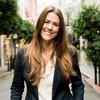Retail Marketer of the Year: Target
- by Sarah Mahoney @mahoney_sarah, January 2, 2007
Maybe it's the always unexpected array of chic coats or well-made wardrobe basics. Or maybe it's the gleaming housewares aisles, which make people feel like they've somehow outsmarted Crate & Barrel. Or maybe it's the tempting row of bargain bins that beg to be pawed through, with their welcoming pictures of the store's peppy little canine mascot instead of markdown signs. This is a store that makes shoppers feel clever, not broke.
What makes it work so well, says Jennifer Halterman, a consultant with Retail Forward, based in Columbus, Ohio, "is that everything the store does in its marketing, online, and in the store experience, delivers on Target's brand promise: 'Expect more, and pay less.' "
For Target, all that paying less is certainly paying off. For November 2006, the most recent period available, Target's sales increased 11.7% to $5.1 billion. Comparable-store sales--considered to be the best indicator of how a retailer is really faring--increased 5.9%, at a time when rival Wal-Mart was awash in poor results and worse publicity. And in a season when many mass stores sent up warning flags that the holidays might not be so happy, Target reaffirmed its prediction of same-store sales gains of between 3.5% and 5.5% for December.
advertisement
advertisement
Part of its ongoing success is the retailer's sensitivity to pricing. Target was quick to respond to the $4 generic drug pricing Wal-Mart introduced last year, and the store's ads, fliers, and Web site always showcase the low prices of national brands.
But to a large degree, the "Expect more" half of Target's brand equation dominates the store's marketing message, delivered through the constant introduction of new design.
Some innovations are utilitarian: Its ClearRx color-coded packaging for pharmaceuticals was created by an art student, and showcased at the Museum of Modern Art. Some break ground in fashion, where Target aims to compete as much with H&M as it does with Wal-Mart. Designer Isaac Mizrahi appears in many of its TV ads, is an integral component of Target's Web site, and made a big splash in 2005 when he unveiled his fall collection in the first-ever online trunk show.
Halterman's favorite recent example of how seamlessly Target integrates marketing and design was a holiday collection of festive tableware created by Tord Boontje, a Dutch designer.
With 35 products priced from $1.29 to $29.99, writes Halterman in her recent "Wal-Mart vs. Target: A Holiday Designer Showdown" report, the design concepts of this line were integrated into the store's entire seasonal campaign--TV, fliers, its Web site, even its Bright Nights display in New York City's Union Square Park footpath, using Boontje's signature forest creatures and iconic seasonal designs. In-store displays offered insights into the designer's inspirations and philosophy; online shoppers could log on to TordTV.
Halterman says there is no comparison between the Boontje line and Wal-Mart's C Squared by Colin Cowie holiday home collection, its first celebrity home line. For one thing, the Wal-Mart items were more expensive, and with a lavender color scheme, not as clearly linked to the holidays. Not only was the line completely unsupported by a marketing campaign to bring shoppers into stores, there wasn't even any explanation of who Cowie is or what he stands for near the display.
"Target and Wal-Mart are positioned light years away in the designer evolution taking place in the mass channel," she writes. Target is "more comprehensive and focuses not only on building the designer brand, but also on building the image of the designer."
It's also hard not to notice how the company's marketing flair has spilled over into public relations triumphs.
On Thanksgiving weekend, when the store suspended magician David Blaine from a gyroscope over West 46th Street near Times Square in New York, it had everyone talking about Target--a monumental feat considering that this is the route of the Macy's Thanksgiving Day parade, and Macy's flagship store is just a few blocks away. That kind of attention is pretty impressive, considering that Target doesn't even have a store in Manhattan.
Target scored again by creating an event tying its logo directly into the New Year's Eve ball-dropping ceremony for 30,000 Times Square revelers treated to 3D glasses making it appear the bulls-eye was popping from the orb.
Of course, Target's high-design profile has some inherent risks. The more linked to design and fashion Target is, the more it subjects itself to the curse of the fashion industry: It's hard to wow all the fashion aficionados all the time.
"To keep growing and succeeding, Target is going to have to continually experiment. It has its core designers in place, and is doing some temporary collections," says Halterman. "It is going to have to continue to do that, and keep raising the bar, as more of its competitors introduce their own celebrity-designer lines."




